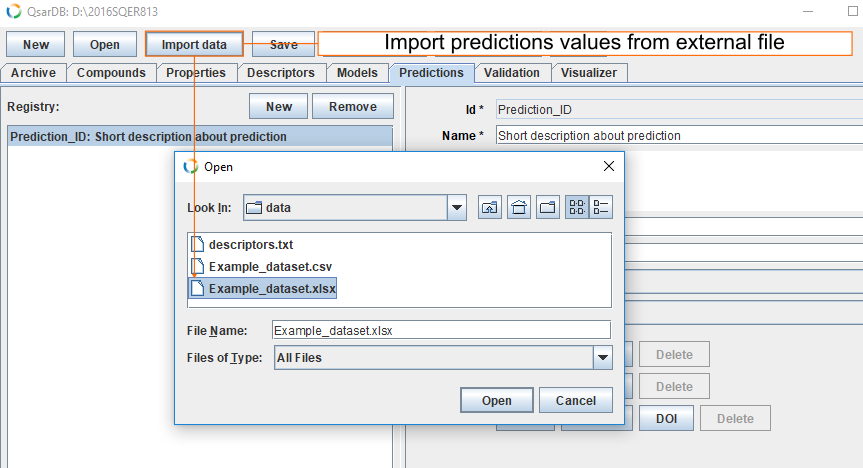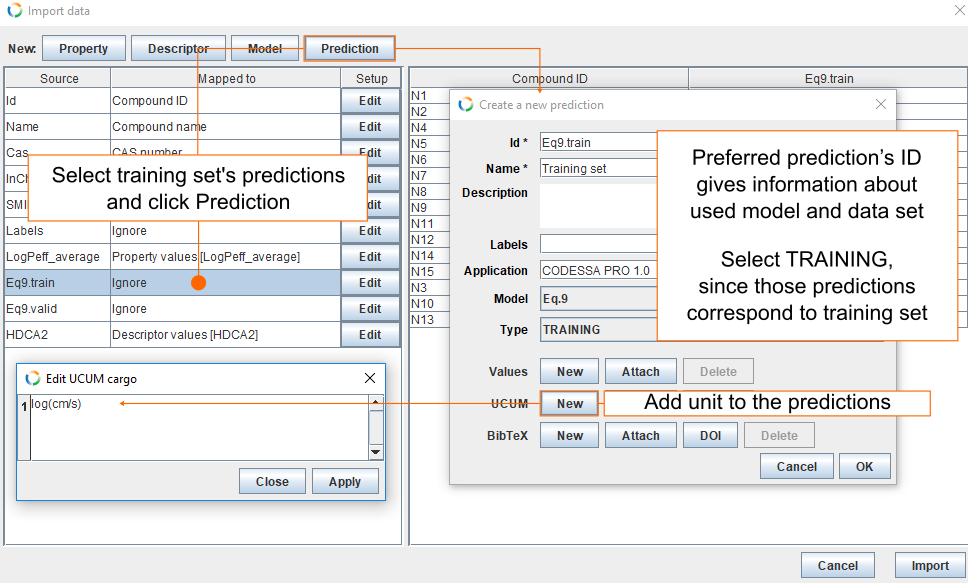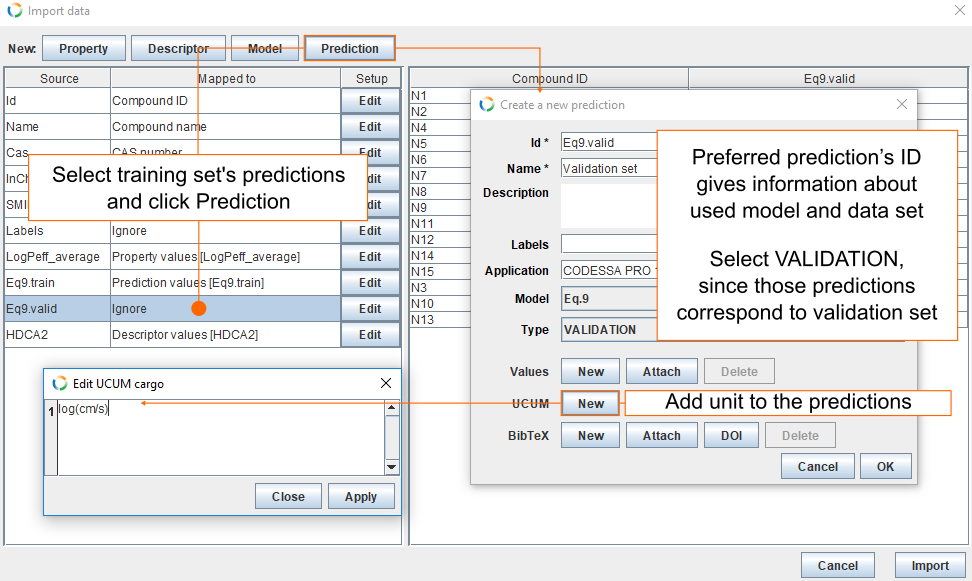Predictions
Predictions can be added to the archive manually or they can be imported from external files. A detailed information about all the fields can be found in the Properties section for QsarDB data format. It is important to mention that at least one model has to be created before any predictions can be added.
Add predictions manually
Add general information about prediction
Button New opens dialog box, where one can insert attributes that give information about the prediction.
- Id attribute is mandatory and it should give information about the used model and data set (e.g. Eq9.train). This is the only attribute that can not be edited later.
- Name attribute is also mandatory and should gives short description about data used for predictions (e.g Training set).
- Description field can be used for longer description about predictions.
- Applicationrefers to software and its version which was used for calculating the predicted values.
- Model is identifier of the Model that was used for making predictions.
- Type determines which kind on data set was used:
- training – Predictions for a data set used for the model development
- validation – Model benchmarking and making predictions on known chemical systems
- testing – Making predictions on unknown chemical systems

Import properties from data file
Import from Excel spreadsheet
The given example uses Excel spreadsheet (for other file types see supported file types). Find the correct datafile and click Open. Column Eq9.train contains values for training set's predictions and column Eq9.valid contains predictions for validation set.

Import training set's values
Select Eq9.train and click Prediction. This opens a new dialog from where you can fill the fields for new predictions. By default Id field is filled with columns name. In this example, we use training set predictions for equation 9. Therefore, prediction's ID will be Eq9.train. For Name we use "Training set". Modelling was done with CODESSA PRO 1.0 and this goes into Application field. For data set Type, select TRAINING. Our predictions also have unit (log(cm/s)). Click New in UCUM field and insert the unit and click Apply. If you don't have any more predictions to add, click Import, but here we add also predictions for validation set.

Import validation set's values
Select Eq9.valid and click Prediction. This opens a new dialog from where you can fill the fields for new predictions. Preferred prediction's ID gives information about used model and used data set. By default Id field is filled with columns name. In this example, we use validation set predictions for equation 9. Therefore, prediction's ID fill be Eq9.valid. For Name we use "Validation set". Modelling was done with CODESSA PRO 1.0 and this goes into Application field. For data set Type, select VALIDATION. Our predictions also have unit (log(cm/s)). Click New in UCUM field and insert the unit and click Apply. Finally, click Import to add prediction values to the archive.

Delete property
Select predictions you want to delete and click Remove. Multiple predictions can be selected by holding down Shift or Ctrl key.

